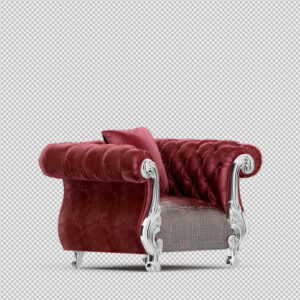
If you Google “history of the chair” you get of course a lot of information about chairs. But, no one really knows who invented the chair, where it originated, or, exactly what it’s for. Also, there is nothing in the search that accurately describes the long term effect of Type 1, or Type 2, sitting position on your posture.
It is said chairs are known from ancient Egypt as far back as 2680 BC. Chairs have been widespread in the western world from the Greeks and Romans onward. Chairs were used in China since 1100 CE. Chairs were used by the Aztecs. Seemingly the history of the chair is as murky as the pyramids or many other early artifact in human civilization.
Early Chairs

An early chair that just may make your back hurt by just looking at it.
Early chairs were mostly associated with royalty or nobility. By the time of the Egyptians sitting was a matter of status. Everyone sat on stools or on the ground but chairs with backs were reserved for the elite.
The first picture of a chair I could find is dated 2800 to 2700. It portrays an individual sitting in what appears to be a typical kitchen chair. This individual is holding what appears to be a harp.
It is said that chairs are constructed more for the eye than for the back. For an ideal more than for practicality. Such is the chair to the right.
Who Uses Straight Backed Chairs
In a classic study of human posture around the world in the 1950’s anthropologist Gordon W. Hewes identified more than 100 common forms of sitting.
He stated more than a fourth of human kind on earth take the load off of their feet by “sitting” in a deep squat both at rest and at work. You could bet that fourth of the population has no chronic back pain.
When researching the history of the chair for this blog I could find no undeveloped, or low income cultures within the statistics for back pain. The literature on the epidemiology of low back pain is accumulating, but for the most part studies are restricted to high income countries. These countries include just 15% of the worlds population.
This would seem to indicate these undeveloped or low income populations do not have low back pain. It’s a good bet they don’t use chairs extensively either.
Who Invented The Chair
If you google “who invented the chair” and click on the drop down menu “who invented sitting” you’ll come across Eric “damn your eyes” Blair. If you follow the link http://www.bleeding-obvious.co.uk/archive3/sittingdown/index.php you can read the story of Eric.
Eric, among other things, found that the chances of being struck by lightning were far greater than exploding in the act of sitting down. This is a fact. Take time to read Eric’s story. You can find out what a “stoat” is.
The first anatomically modern humans appeared 200,000 years ago. Most of this time people sat on the ground, a log, a rock or some other convenient object. No history of the chair exists past 5,000 years ago.
The human backbone has been around 200,000 years. The chair has been around for a mere 5,000 years. Did the backbone suddenly evolve to it’s present chair loving structure as suddenly as the chair appeared? It doesn’t seem likely. There would be some sort of evolutionary history of the chair further back.
What makes a chair a chair is it’s ability to be sat upon. It is said a good chair provides “proper” lumbar and pelvic support which results in the back muscles being less stressed. It’s said that with this “proper” position comes better posture, breathing, and lessened fatigue. Statistics don’t support this.
Why a spine needs support after 195,000 years without it isn’t mentioned. Never is. Also included in the benefits of a healthy sitting posture – when the spine is properly aligned – is that it promotes comfort, concentration and endurance through extended hours of sitting at a task. Statistics don’t support this thinking.
Is the backbone more attuned to a life mostly sitting without a back support? A backbone attuned to a life without an “intangible cultural heritage” called a “chair”. A backbone attuned to a life without backache from sitting too long in an upright, uptight, up straight, “proper” position in a straight backed chair.

195,000 years without a chair and most likely without a backache
Submit an answer or comment on this question for enlightenment or discussion.
The Chair and Civilization
Therefore it’s been about 5,000 years since the invention of the chair.
Do you have to be sitting in a chair to be civilized? Does a chair have to be a portion of a culture for it to be civilized? There are many civilizations or cultures that sit on a cushion, rug or mat. Many are or were advanced.

Who would argue the sophistication of Indian culture
The Asian cultures have a history of sitting close to the floor. Does this make them uncivilized? Does this make them civilized, and smart?

Carved from a mountain of solid rock!
Indian culture has a history of sitting on or close to the ground. Indian art, sculpture, religion and literature are ancient, extensive.
Statistics by thegoodbody.com indicate back pain has increased in the US since 1998. Physician visits for back pain also continue to rise since 1998. The reason for this is more people sitting and standing in a Type 1, or “proper” position. We sit up straight for more and more prolonged periods.
According to the above website: 31% of men and 20% of women report back pain affects their ability to do work. It appears back pain follows civilization and the chair. The more civilized country according to western standards, the more common the occurrence of back pain.
You may be required to sit up straight, by duty or desire, in some fashion for a prolonged period. As I am right now. Consider the age of the straight chair versus the history of the backbone. That’s 195,000 years without chairs and 5000 years with them. Which period do you think influences your backbone and posture more.

Curling a foot under oneself eases the pressure on the spine while sitting “up straight”.
Recognize the nature of your body while sitting up straight. Recover in your off duty hours. Take up a hobby like the Perfect Posture method. Take up yoga, Pilates or any movement oriented discipline to recover from prolonged Type 1 positioning. Sit as close to the floor as you are able.
Your body can’t function at optimum level without addressing the issue of sitting too long in a formal position.
Pelvic Positioning
The immediate orientation of your pelvis in a Type 1 as opposed to a Type 2 position can be experienced firsthand. You can check the differing pelvic position with the following maneuver:
Put your hands your belt line. While sitting “up straight” raise your knees to your hip level. Or you can slouch. You can feel the pelvis move from it’s forward tilt (Anterior Pelvic Tilt) while sitting up straight, to a more level position.
This is the position the pelvis should be in most, or preferably, all the time. Then your back isn’t over arched. And subsequently your intestines are not spilling up against your abdominal muscles creating a “pot belly”.
Click the following link for Perfect Posture balancing tips so you can have guidelines for a balanced, properly curved spine and a resting tonus to your body.
It’s unknown if the chair is a requirement for civilization or a residual item of interest. Should it be defined as an “intangible cultural artifact” such as foot binding shoes in China? With the apparent affect of the chair on our backs is the straight chair abusive to both men and women?
The straight backed chair gets a poor review. We don’t know where it came from. It’s not known who invented the chair. We don’t know if the straight backed chair is suited to our backbone. Unless you consider the mentioned statistics.

